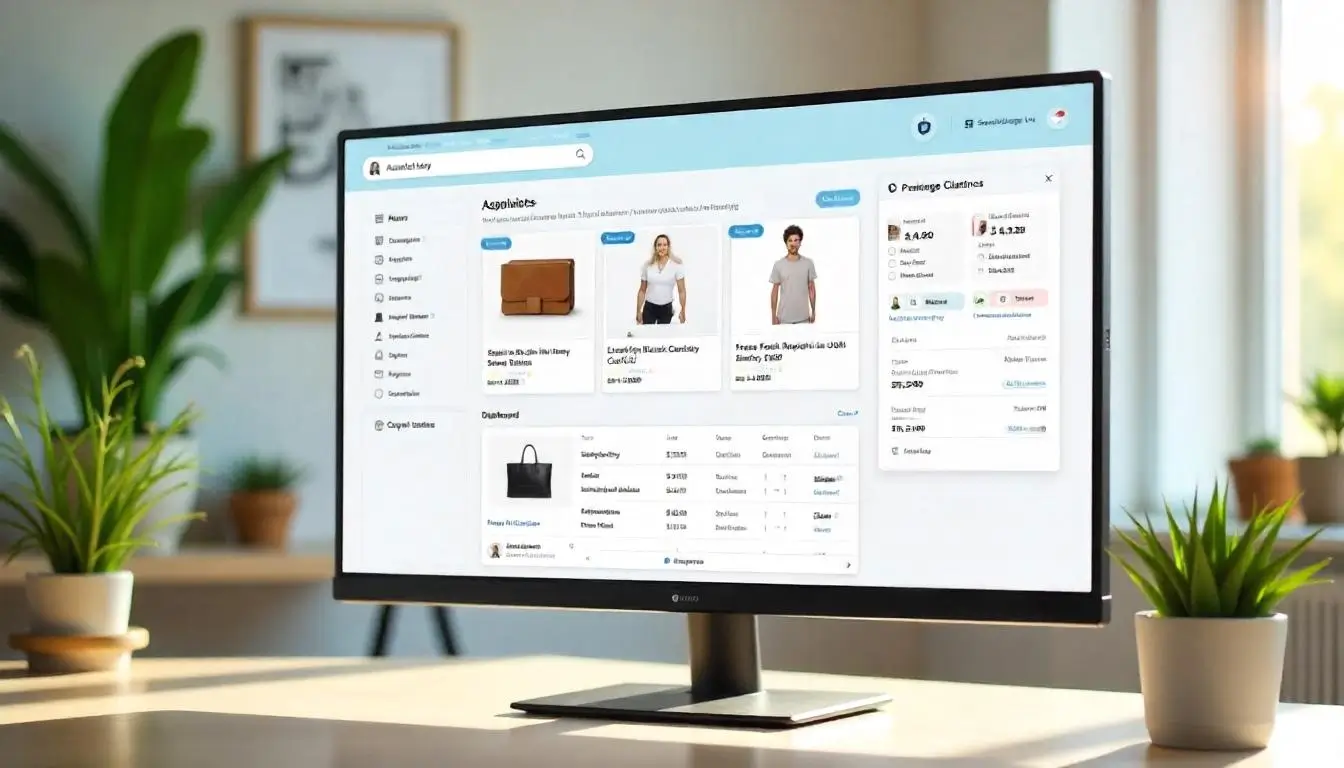Introduction
Want to start an online business? Learning how to build an eCommerce website is the first step toward selling products online. Whether you’re a beginner or an entrepreneur, setting up an eCommerce store is easier than ever. This guide will walk you through the process, from choosing a platform to launching your store.
Step 1: Choose the Right eCommerce Platform
The foundation of your online store is the eCommerce platform you choose. Some popular options include:
- Shopify – Easy to use, great for beginners.
- WooCommerce – Ideal for WordPress users.
- BigCommerce – Scalable and feature-rich.
- Magento – Best for advanced users with technical skills.
🛒 Recommendation: If you’re just starting out, Shopify is the easiest and most beginner-friendly option.
Step 2: Get a Domain Name & Web Hosting
To make your website accessible online, you need:
✔ A domain name (e.g., yourstore.com) ✔ Web hosting (if you’re using platforms like WooCommerce or Magento)
💡 Tip: Shopify includes hosting, while WooCommerce requires external hosting (e.g., SiteGround, Bluehost).
Step 3: Design Your eCommerce Website

A well-designed website boosts customer trust. Consider:
🎨 Choosing a theme – Shopify and WooCommerce offer customizable themes. 🖌 Branding elements – Use a professional logo, brand colors, and high-quality images. 📱 Mobile responsiveness – Ensure your site looks great on all devices.
🚀 Pro Tip: Shopify’s drag-and-drop builder makes designing easy.
Step 4: Add Products to Your Store

Your products are the heart of your store. When adding them:
📝 Include product titles & descriptions – Use clear, keyword-rich descriptions. 📷 Upload high-quality images – Showcase products from different angles. 💰 Set pricing & inventory details – Ensure competitive pricing.
🔍 SEO Tip: Optimize product pages with relevant keywords like “how to build an eCommerce website.”
Step 5: Set Up Payment & Shipping Options
To accept payments, integrate gateways like:
💳 PayPal, Stripe, Shopify Payments – Secure payment processing. 🚚 Shipping options – Offer free shipping, flat-rate shipping, or real-time carrier rates.
🛠 Pro Tip: Shopify provides built-in payment solutions for seamless transactions.
Step 6: Optimize Your Store for SEO & Marketing
🔎 SEO Basics:
- Use keywords naturally in product titles & descriptions.
- Optimize URLs (e.g., yourstore.com/best-selling-products).
- Add meta descriptions for better search visibility.
📢 Marketing Strategies:
- Run Google & Facebook Ads to attract customers.
- Leverage email marketing for customer retention.
- Use social media to drive traffic.
🚀 SEO Tip: Include the keyword “how to build eCommerce website” in your blog content to rank higher on Google.
Step 7: Launch & Promote Your eCommerce Store
🎉 Once everything is set up, test your website thoroughly and go live!
🔹 Announce your store on social media. 🔹 Run promotions & discounts for your first customers. 🔹 Use analytics to track and improve performance.
FAQs About Building an eCommerce Website
1. How much does it cost to build an eCommerce website?
It depends on the platform. Shopify plans start at $39/month, while WooCommerce requires separate hosting & domain fees.
2. Do I need coding skills to create an eCommerce store?
No, Shopify and WooCommerce allow you to build a store without coding.
3. How long does it take to launch an eCommerce website?
With Shopify, you can launch in a day. WooCommerce or Magento may take longer.
4. What is the best platform for beginners?
Shopify is the easiest for beginners due to its user-friendly interface.
5. Can I sell digital products on an eCommerce website?
Yes! Platforms like Shopify and WooCommerce support digital product sales.
Conclusion
Building an eCommerce website doesn’t have to be complicated. By following this step-by-step guide, you can launch your online store with ease. Whether you choose Shopify, WooCommerce, or another platform, the key is starting now and optimizing along the way!
🚀 Ready to build your eCommerce store? Get started today!
- Is It Safe to Buy from Ulta Online? Exploring If Ulta Beauty is Legit in 2025
- Is Ecommerce Profitable: A Complete Guide for 2025
- Top eCommerce SEO Packages for 2025: Boost Your Online Store's Visibility
- Top AI Tools for Ecommerce in 2025
- How AI Is Revolutionizing Ecommerce in 2025
- Taobao vs. Alibaba: Which One is Right for You?
- Shopify Website Builder vs Competitors: Which One Wins?
- My Shopify Website Builder Journey: Building My Dream Store in 2025! 🚀
- Understanding Shopify 1099-K Tax Forms for 2025
- Shopify 1099-K: What Sellers Need to Know
- RaveDigitalAgency: Top Shopify eCommerce Agency for Your Store
- Best Shopify Dropshipping Tips for Beginners
- How to Start a Shopify Dropshipping Business in 2025
- Grow Your Business with Shopify eCommerce Experts at RaveDigitalAgency
- Why RaveDigitalAgency is the Best Shopify eCommerce Agency
- PSG eCommerce Grant: Boost Your Online Business Today
- How to Apply for the PSG eCommerce Grant in 2025
- How to Build an eCommerce Website: A Beginner’s Guide
- Top Reasons to Build Your eCommerce Website with Shopify
- Best B2B eCommerce Solutions for Growing Businesses
- Electronic Commerce (E-Commerce): A Beginner’s Guide to Online Selling
- The Rise of Electronic Commerce (E-Commerce) and Its Impact on Businesses
- Electronic Commerce (E-Commerce): Key Trends Shaping the Industry
- Electronic Commerce vs. Traditional Commerce: Why E-Commerce Wins
- How Electronic Commerce (E-Commerce) is Transforming Retail in 2025
- Electronic Commerce (E-Commerce): The Future of Online Business
- Top 10 eCommerce Web Design Agencies in 2025: Who’s Leading the Game?
- DHL eCommerce Customer Service: How to Get Fast Support in 2025
- Top Ecommerce Website Builders: Launch Your Store in Minutes
- Best Tools for Building an Ecommerce Website in 2025


